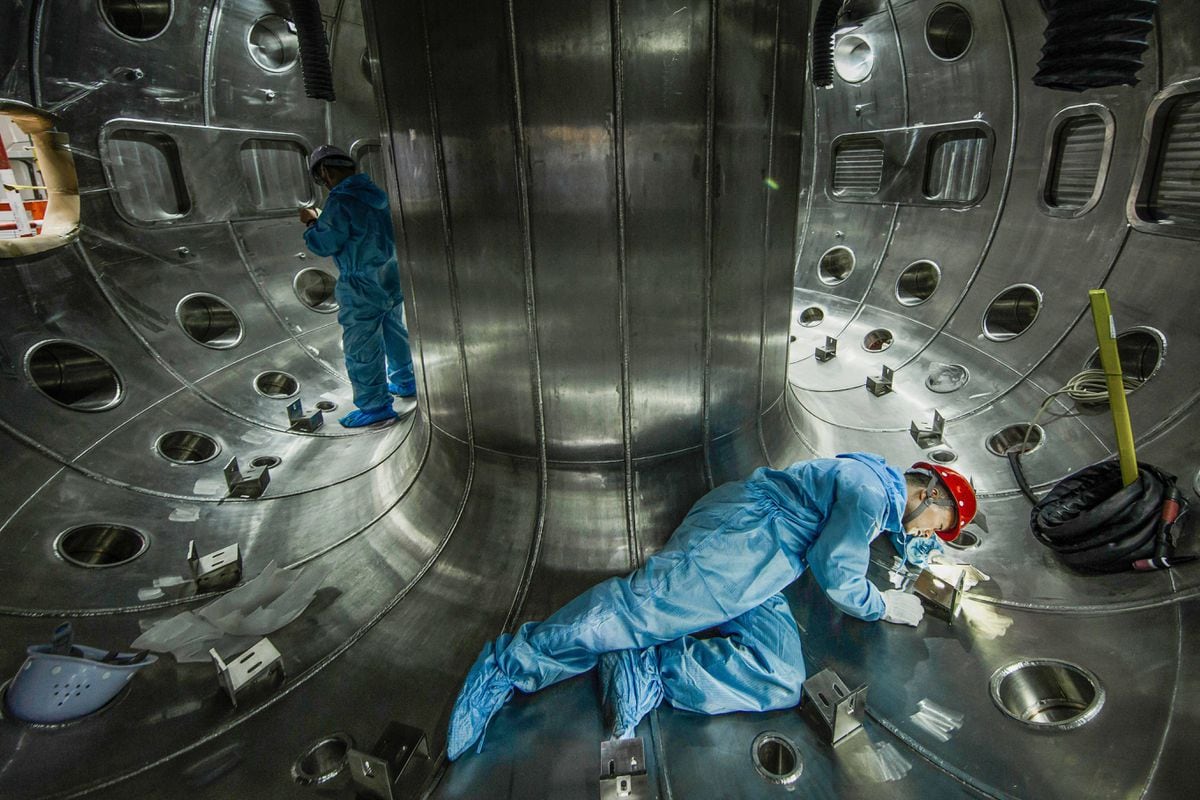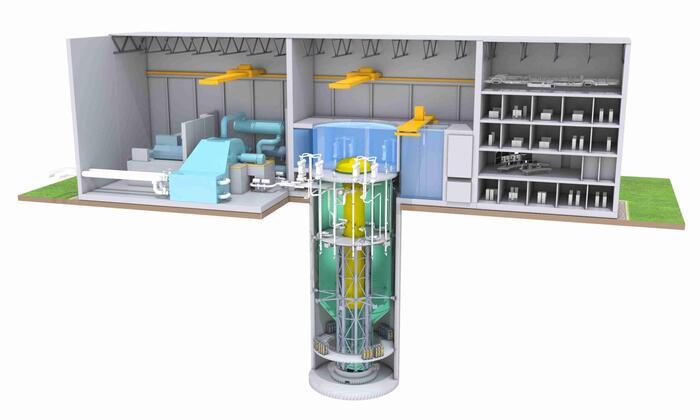Enlarge image
Illustration of plasma (colored pink) in the JET fusion reactor
Photo: EUROfusion / CC-BY-4.0
Scientists have briefly generated unprecedented levels of energy for fusion experiments at a test facility developing nuclear fusion reactors in the UK.
The researchers of the Europe-wide network Eurofusion released 59 megajoules of energy in the form of heat during a five-second plasma pulse, the institutes involved announced on Wednesday.
One megajoule can boil around three liters of water at 20 degrees.
The average output was eleven megawatts.
The temperatures generated are ten times higher than those in the center of the sun.
The JET (Joint European Torus) test facility in Culham near Oxford broke its own record of 21.7 megajoules, which is around 25 years old.
Experiments with the fuel for future fusion power plants have not been run in the research reactor since 1997.
The raw material tritium used for this is rare.
The German Max Planck Institute for Plasma Physics (IPP) and the Research Center Jülich are also involved in the project.
"What we have learned over the past few months will make it easier for us to plan experiments with fusion plasmas, which generate significantly more energy than is required for heating them," explained Sibylle Günter, Scientific Director of the IPP.
The balance sheet is not correct – yet
This is a shortcoming of all previous attempts at nuclear fusion: The energy generated is consistently less than the energy used, even if successes are repeatedly reported, such as a recent Californian project.
The results of the experiment presented on Wednesday "provide the clearest evidence to date of the potential of fusion energy to deliver safe, sustainable and low-carbon energy," said Forschungszentrum Jülich.
In theory, fusion reactors could in future cover a significant part of the global energy requirement – like the sun, where hydrogen nuclei fuse into helium in a continuous reaction.
The aim of Eurofusion is to harness this energy source, which is in a sense the opposite of the nuclear fission used in nuclear power plants.
With the fusion energy record, "an important milestone on the way there" has been reached.
However, the JET, commissioned in 1983, is considered too small to produce net energy.
The follow-up project in fusion research – ITER – is currently being built in southern France.
It aims to demonstrate the scientific and technological feasibility of fusion energy.
China, the European Union, India, Japan, South Korea, Russia and the USA are involved.
The ITER reactor, which costs more than 20 billion euros, is scheduled to open in 2025.
The conditions there were tested in JET: the hydrogen isotopes deuterium and tritium are fused there, while in other nuclear fusion projects tritium is usually dispensed with for cost reasons.
In later power plants, it is hoped that new tritium will be produced.
In addition, as with ITER, the JET plasma vessel was clad with a mixture of beryllium and tungsten.
"One kilogram of fusion fuel contains around ten million times the energy of one kilogram of coal, oil or gas," according to Forschungszentrum Jülich.
When used, no greenhouse gases would be released.
However, the enormous amounts of energy released are still a long way off.
The goal of ITER is to generate 500 megawatts of energy for more than 300 seconds – even just in the form of heat.
Electricity should only be supplied by the follow-up project EU-Demo.
Estimated launch: around 2055.
ak/dpa









